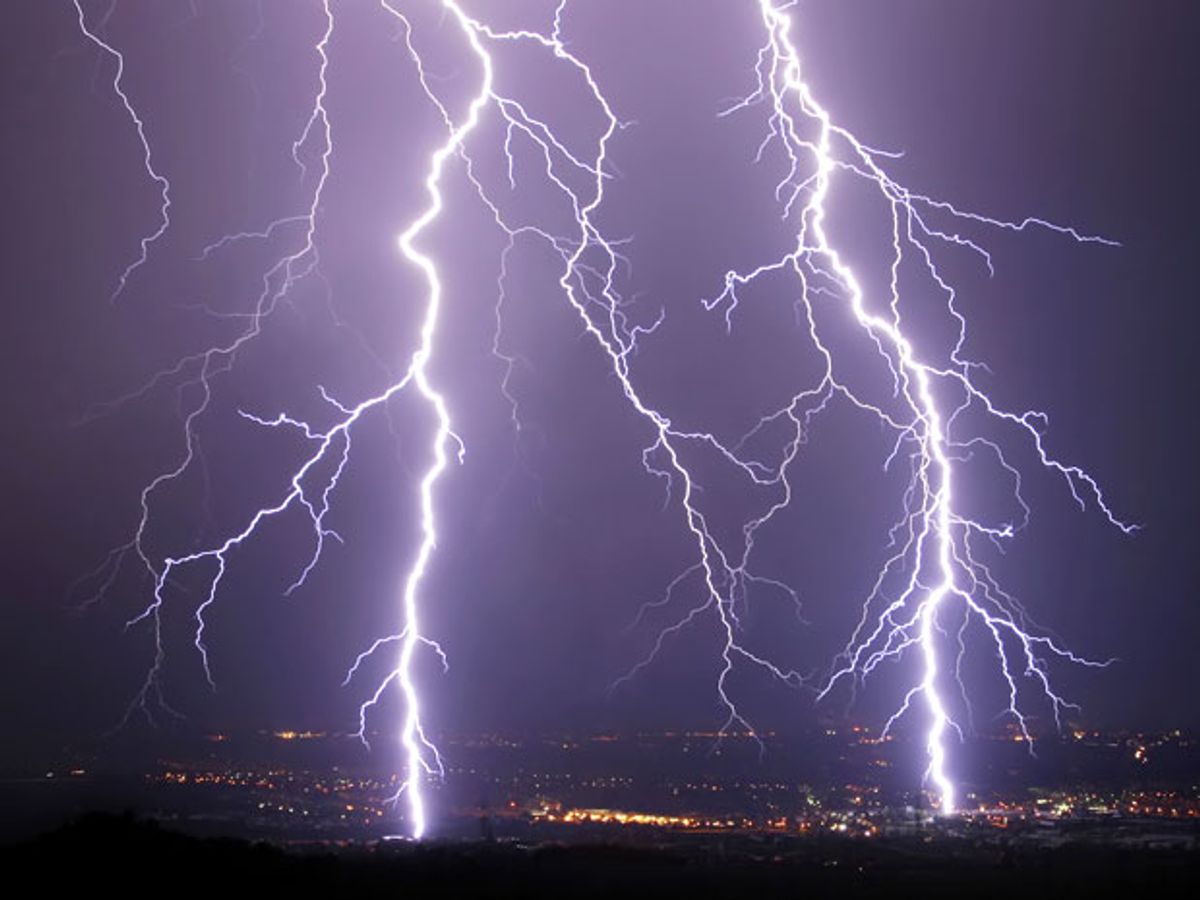Solar winds capable of triggering spectacular displays of the Northern Lights in the sky may also boost the rate of lightning strikes on the ground. The finding could allow researchers to use sun-monitoring satellites to improve weather forecasts of hazardous thunderstorms in the future.
The study of weather patterns over northern Europe found an average of 422 lightning strikes in the 40 days after a high-speed solar wind reached the Earth's atmosphere, according to BBC News. By comparison, just 321 lightning strikes occurred in the 40 days prior to the solar wind's arrival. Why this happened remains something of a mystery, as detailed in the journal Environmental Research Letters.
The solar wind originates when the sun's corona layer reaches temperatures of up to 1.1 million degrees Celsius. Such high temperatures excite particles to the point where they overcome the sun's gravitational pull and stream away in all directions, according to SPACE.com. The solar wind carries along magnetic clouds as well as the charged particles.
Past studies have shown that galactic cosmic rays originating outside the solar system can boost the rate of lightning on Earth. But the solar wind connection with a higher rate of lightning surprised researchers at the University of Reading in the UK; they had expected the solar wind to bring along a stronger magnetic field that could help shield Earth against cosmic rays.
The researchers did observe a slight but rapid decrease in the rate of galactic cosmic rays coinciding with the arrival of a high-speed, high-intensity solar wind. But they also found an increase in lower-energy particles called solar energetic protons. Such particles may end up filtering down through Earth's atmosphere to storm clouds and acting as a trigger for lightning.
Researchers still need to test their hypothesis about the solar wind particles by tracking their progress through the atmosphere. They also hope to undertake a global study of the connection between lightning rates and solar wind—expanding the scope of the lightning data they use from the UK Met Office's records to a broader repository such as the World Wide Lightning Location Network.
Higher rates of lightning strikes may represent just the latest finding about the connection between the sun and life on Earth. Huge coronal mass ejections from the sun can lead to solar magnetic storms, such as one that knocked out telegraph systems across North America and Europe in 1859, or a similarly huge solar storm that Earth barely dodged in 2012.
Image: Solar Dynamics Observatory/NASA
Jeremy Hsu has been working as a science and technology journalist in New York City since 2008. He has written on subjects as diverse as supercomputing and wearable electronics for IEEE Spectrum. When he’s not trying to wrap his head around the latest quantum computing news for Spectrum, he also contributes to a variety of publications such as Scientific American, Discover, Popular Science, and others. He is a graduate of New York University’s Science, Health & Environmental Reporting Program.



